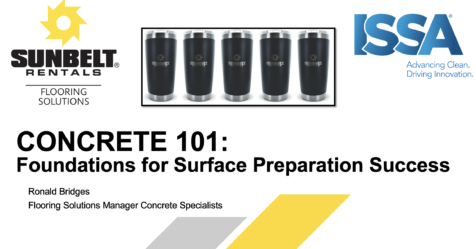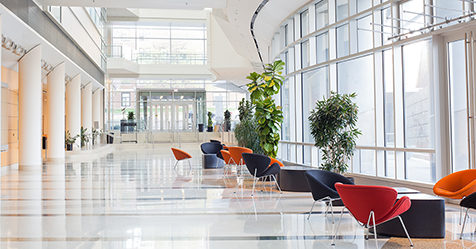Dear PC4HS implementers and supporters:
I am on my second day of training at the Fall River Public Schools, and all is well.
I will be here for the next few weeks “training the trainer” and setting up Process Cleaning for Healthy Schools® (PC4HS) at a very large middle school with six custodians.
Thedistrict, located outside of Boston in Fall River, Massachusetts, consists of 17 schools that serve 9,886 students in grades pre-kindergarten through 12.
It recently completed a successful two-day preliminary
Partnering With Leaders
Yesterday, we had — and
For our pilots, we specify both the technology and the brands to standardize the initial approach and streamline training.
Most of the products from one of our supporters, Impact Products, were already waiting for us when we arrived.
The equipment from one of our preferred vendors, Kaivac Inc. arrived shortly thereafter.
The new Super Coach Pro 6 backpack vacuums from ProTeam, another of our preferred vendors, were also waiting for us; the custodians loved them.
Our GreenWorks products from preferred vendor Clorox Company will arrive in the next few days, but we used what was otherwise on hand, so were not impaired.
Overcoming Adversity
Aside from the logistics of equipment and product delivery, some of the challenges facing Fall River Public Schools include union rules and regulations.
Under strict union guidelines, we cannot reorganize the cleaning areas.
Also, according to established rules, custodians bid on their cleaning stations; some have 22 classrooms and others have only 12 or so.
PC4HS is flexible, so we can accommodate regulations such as these.
Because of the program’s adaptability, we always find a way to train trainers and leave schools much cleaner and healthier than they were before we came.
I will be holding a very friendly meeting with the union this week to discuss a few minor concerns.
We are supportive of union efforts, and this particular union has already given its blessing to our endeavors. 
Constant Improvement
With every school district we work with, we learn something to make implementations in the future more effective.
I personally want to thank all of our PC4HS Board members for the hard work they perform and the strong support they provide the nonprofit.
We continue to move ahead, and the nonprofit is gaining momentum in all regions, shaping up as a national movement.
We are making a real impact; we’re raising the bar on hygiene, we’re increasing cleaning efficiency and we are promoting cleaner, healthier schools around the country.
Sincerely,
Rex Morrison, founder of the PC4HS Consortium
Time Studies In Process Cleaning
Creating “single-piece flow” with Process Cleaning For Healthy Schools® (PC4HS) to maximize efficiency while eliminating wasted time and effort.
We believe you must slow down before you can speed up.
That is, you must carefully break down each step of the work to see where time and energy are being wasted, then eliminate the wasted time/motion and — to borrow a manufacturing term that sparked a quality movement — create “single-piece flow.”
Single-piece flow is a fluid process that gets the job done in the smoothest, fastest, easiest way — without stops and starts.
This means that we spend a lot of time with a stopwatch and experimenting with different tools and ways of cleaning — including the notion of ergonomics and the time spent moving between cleaning tasks — to find the best, simplest and most direct ways to clean.
Even little things like picking up and putting down a duster take time, which adds up quickly and translates into lost energy and wasted money.
Every Little Bit Counts
For example, picking up a duster requires one second for each motion: Picking up and putting down.
Therefore, if the total work cycle time for dusting an object is five seconds, the two seconds spent picking the duster up and putting it back down is 40 percent of the total time needed.
If the task at hand only requires a total work cycle of three seconds, 66 of that time — well over half — is essentially unproductive.
It may only be a couple of seconds here and a second or two there, but it adds up to wasted time that can be eliminated by creating a specific “single-piece flow” for the dusting process that does not require repeatedly picking up and putting down the duster.
For more information and to learn how you can support the nonprofit, visit www.PC4HF.com/index.php.



